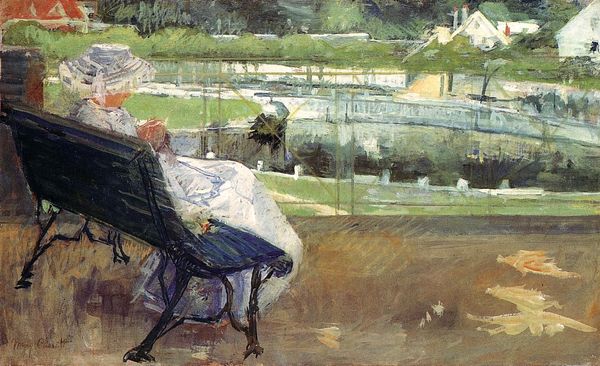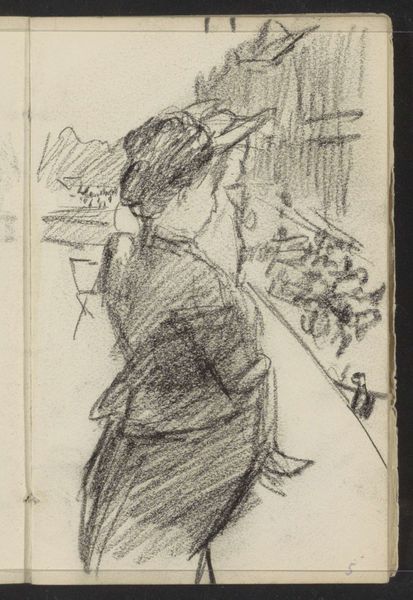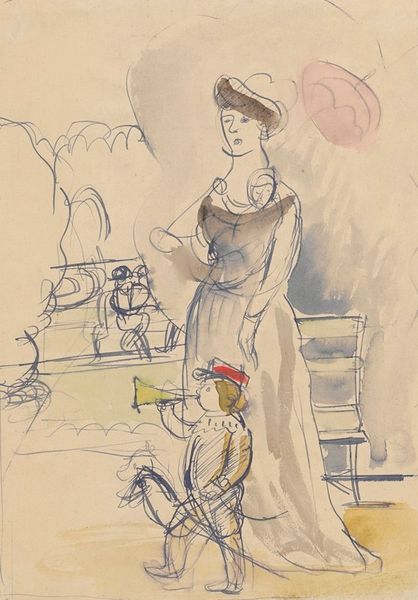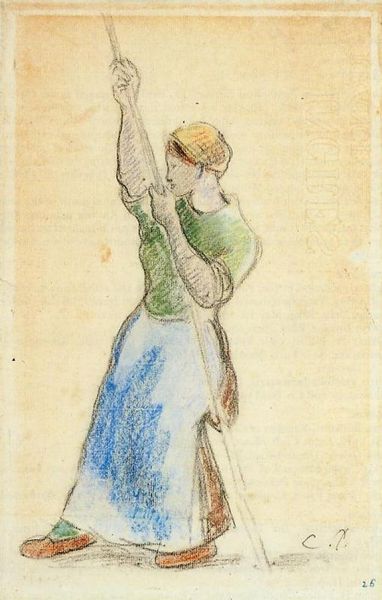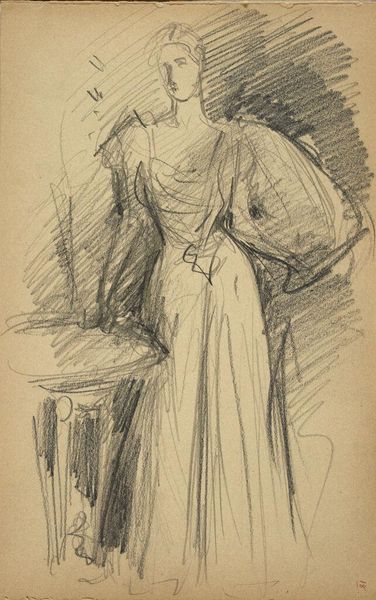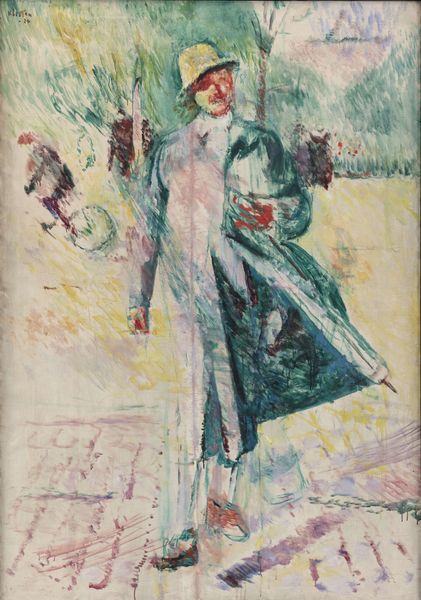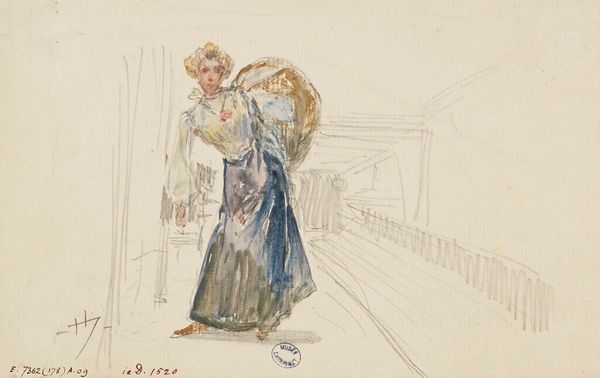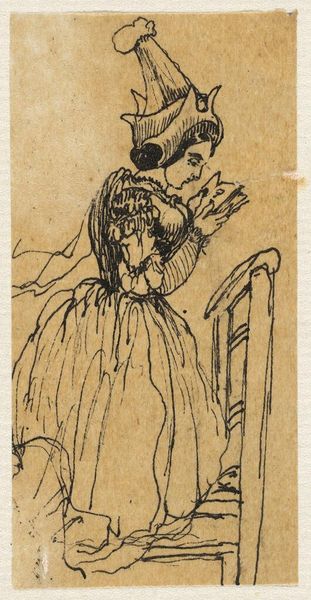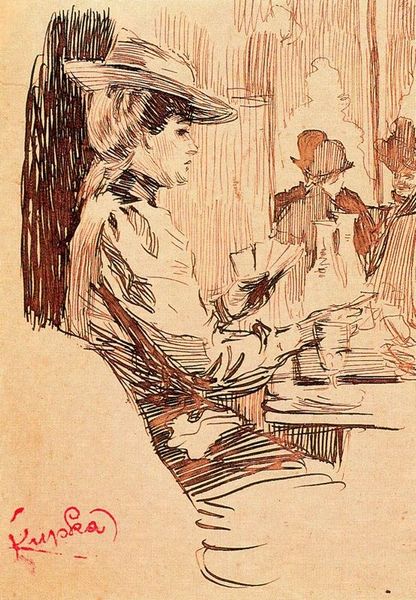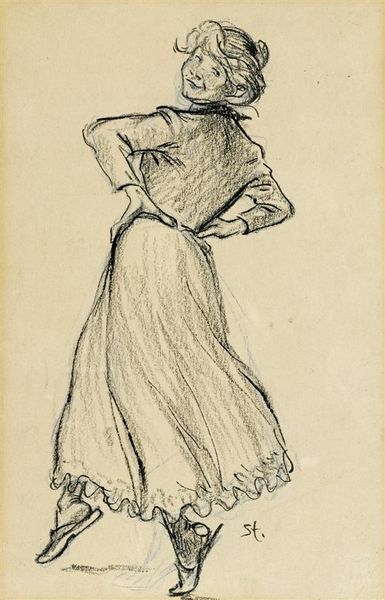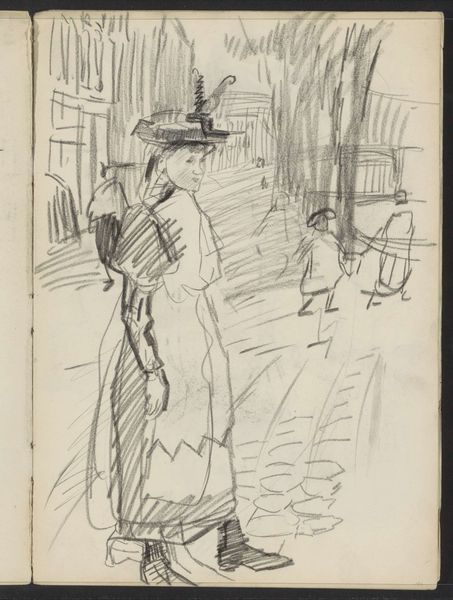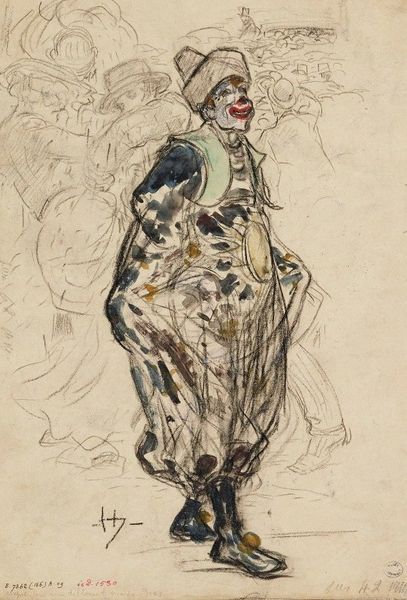
Copyright: Public domain
Editor: This is "A Young Merchant's Wife," a coloured pencil drawing from 1914 by Boris Kustodiev. There’s almost a dreamlike quality to the piece. The colours are soft, the lines are loose. What catches your eye? Curator: Immediately, I am struck by the strategic placement of colour. Note how the artist has confined the strongest reds—in the hat, the belt, the small details of her shoes and purse—to a narrow horizontal band across the center of the composition. The eye is constantly drawn back to this pivotal area, animating the whole. What do you make of the visible pencil strokes, and their orientation in relation to the forms they describe? Editor: They’re all going in the same direction, generally upwards. Does that flatten the space? Curator: Precisely! It thwarts any illusionistic depth. The image operates more as a field of hatched colour, rather than a deep, receding space. But also consider the treatment of light. The building is brighter than the trees behind it and the road leading up to it, creating a hierarchy of shapes from which Kustodiev has wrung dynamism. Editor: So it’s more about colour relationships and lines than mimicking real life? Curator: Exactly. Despite its figurative nature, the work achieves its success through an emphasis on intrinsic, formal qualities, deftly managed to yield a result both lively and striking. Editor: I never would have noticed all that myself. I was too focused on what was literally there, not how the artist assembled it. Thanks! Curator: The beauty lies, does it not, in seeing both?
Comments
No comments
Be the first to comment and join the conversation on the ultimate creative platform.
